There are more than 8 000 species of forest pests and insects in the country, of which more than 200 species are causing serious damage to forests, and their species are still rising.
In some places, the incidence is high and the damage is serious. Therefore, taking a scientific and effective approach to prevention and control is imminent. However, scientific and technical personnel, especially grass-roots workers, are deficient in information and poor in information and cannot take timely and effective preventive and control measures, resulting in an increasingly severe management of forest pests. In view of this situation, how to develop and develop new forest pests, especially forest disease prevention and control system information software as soon as possible based on information technology, make forest disease prevention and control measures digitized and informatized, and establish a forest plant disease information system in China. It is particularly important that, after the establishment of the plant disease information system, the data detected by plant disease detectors and other instruments can be collected and analyzed, which plays a very important role in the prevention and control of plant diseases.
Internationally, the network resources related to forest diseases are relatively abundant. Many professional websites provide detailed forest disease information and related picture bases for users to communicate and use. They started preparations in the mid-1990s and opened up after years of efforts. The purpose is to provide users with a wealth of high-quality image archives in forestry and forest pathology. It provides a detailed and vivid introduction to the knowledge of various forest diseases and pests in the form of illustrations. It is a rare online teaching material. The author believes that in the future, the forestry information system will be developed in the direction of the combination of the network and the database. That is, the database management system is the main interface for user applications, and the website will provide support and other related services for upgrading the database management system software.
Based on the principles of database management software, Visual Basic 610 programming and Access database as the technical support, this paper integrates the achievements of forest disease research in China for many years, and establishes an important forest disease database management system in China based on the pathogenic types of forest diseases.)) China Forest plant disease information system. The establishment of the system not only provides technical support for the standardized management of forest plant disease specimens in China, but also provides a technical platform for the scientific and technical personnel in forestry and related fields to rapidly comprehensively utilize information on forest plant diseases in China.
1 Development Program 1.1 Database Establishment 1.1.1 System Requirements Analysis Each forest plant disease contains a lot of information. In order to meet the needs of different forestry workers for this information, the disease information is classified as follows: Disease name, including Chinese Names, English names, and aliases; pathogenic information, including pathogenic features, pathogenic types, and taxonomic status, where taxonomic status includes the gate, class, order, family, genera, and species of the pathogen. If the pathogen is a fungus, its morphological characteristics include sexual type and asexual type; distribution and hazards, including the scope of the host, geographical distribution, etc.; symptoms, symptoms of the main symptoms; the law of occurrence and development of the disease, including the path of pathogen infection , Infection cycle and external environmental conditions, the infestation cycle includes: wintering and over-summer patterns and sites of pathogens, pathogenic route of transmission, initial infection and re-infestation of diseases; prevention and control measures, including quarantine, Forestry technology, the use of disease-resistant varieties, physical, chemical, and biological control, and other technical measures; references, referring to the above sources of information; for forest plant specimens, in addition to the above information, also increase the number of collectors, collection sites, collection date And save the location and other content.
1.1.2 Database Logic Design According to the analysis of system requirements, this database needs to establish 3 different forms, namely: forest plant disease specimen information table (Table 1); 4 China forest plant disease information table, which differs from 4 in that the latter is not Including collectors, collection sites, collection time, and appraiser fields, but added reference fields; user information table (Table 2).
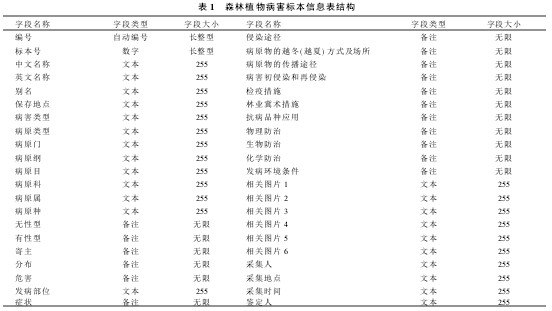
Table 1 Forest Plant Disease Specimen Information Table Structure 1.2 System Analysis To do a good job of forest plant disease prevention and control In addition to the study of forest plant diseases themselves, it is more important to let more people realize the seriousness of forest plant diseases, prevention and control work. Importance and specific prevention methods. Therefore, to establish a forest plant disease information system in China, the first concern is the information utilization of forest plant diseases. In order to achieve this in the database management system, we must make the design of the system has a powerful query and retrieval capabilities. According to the types of forest diseases and insect pests in China and the specimens collected by the Chinese Academy of Forestry, the information system for forest plant diseases established in China is divided into two parts, namely the forest plant disease specimen information management subsystem and the forest plant disease information management subsystem. The purpose is to achieve a quick, convenient, and user-friendly interface.
The objective of the forest plant disease specimen information management subsystem is to realize the management of forest plant disease specimen information of the Chinese Academy of Sciences. The function should include adding, modifying, deleting, querying, retrieving, and printing the database records. The focus should be on the maintenance and retrieval of information. The forest plant disease information management subsystem is to realize the management of all existing forest plant disease information in China. This module includes most of the functionality of the library management.
Maintaining the database is one of the most important functions in the database management software. The background management of the database is achieved by setting user permissions. Therefore, the system has designed two types of administrator users and ordinary users. In addition to the functions possessed by the general user, the administrator user is also assigned to the administrator to add information, delete information, modify information, change attributes, manage other users, and other super rights. Ordinary users only have browse, query, and retrieve permissions.
2 Selection of software and hardware environment and development tools 2.1 System software and hardware environment The system software and hardware should have more than 64MB of memory, 133MHz or more processor, 40MB or more hard disk space, Win-dows98 or later operating system, display the lowest resolution 800@600, either printer.
2.2 Selection of Development Tools Based on the compatibility principles and security considerations of the software, the Access database was selected as the database platform. Because the built management system is a stand-alone version, the amount of data is not too much (up to more than 10,000), and this database can be run alone (of course, necessary dynamic link library file is indispensable), unlike SQL SERVER, etc. Then purchase the software installation. The development tool is Microsoft Corporation's Visual Basic 610. Visual Basic 610 has a WYSIWYG (WYSIWYG) function as a visual programming tool. It contains hundreds of statements, functions, and keywords, many of which are directly related to the Windows GUI. The application software developed by the programming tool developed by Microsoft has strong compatibility and can run on any computer (as long as the hardware and software conditions are in place). The ActiveX data object ADO in Visual Basic 610 is a very powerful control that allows you to access data and edit data in a variety of formats and access forms. This simplifies the development workload for the management system and facilitates the implementation of system design requirements.
3 software system to achieve the technical points 3.1 database access Visual Basic 610 provides a variety of tools and methods of data management, users can use the data control and structure of the different databases are linked, and read and write operations on them; the management system development Use ADO data access technology. ADO, or ActiveX Data Objects, is Microsoft's data manipulation technology at the object level. It provides a set of high-level automation interfaces for operating OLEDB data sources. The relationship between ADO and OLEDB, database applications, and data sources is shown in Figure 1.
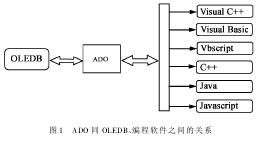
Figure 1 The relationship between ADO and OLEDB and programming software The connection between ADO and the data source in the management system includes: Connection String property of the Con-nection object and two aspects of the Command object: Connection String property of the Connection object Setting: / Provider =Microsoft.Jet.OLEDB.410;Data Source=0&App.Path&/data.mdb;Jet OLEDB: Persist Security In-fo=False0. The Command object can execute commands on the data source. Using this object, you can query the database and return a Recordset object. You can execute a batch of data operations and manipulate the structure of the database. Different data providers provide different collections, methods, and attributes for this object. Two different Command objects are used in this system, as shown in Figure 2.
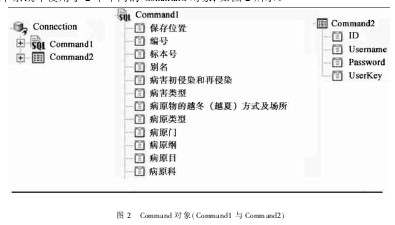
Figure 2 Command object (Command1 and Command2)
3.2 Implementation of Query Function The query language used in this management system is the SQL query language. The functional separation of SQL language can be divided into two major parts: Data Definition Language (DDL) and Data Manipulation Language (DML). DDL is used to create related database objects based on related relational models: databases, base tables, views, and indexes; DML is used to retrieve and modify the contents of the database. This management system uses DML language, especially Se-lect statement. The format of the Select statement is as follows:
Select field names from the table name where condition order by field name management system in many places directly or indirectly use this structure to achieve the conditional query. For example, the SQL statement of the Command object is:
Select save location, IDfrommtable orderby No. 3.3 Implementation of system intelligence function System design takes into account the uniqueness of the specimen number, continuity and other characteristics, specifically designed automatic detection number function. Since the data type of the sample number in the database table is int type, two loops are implemented when this function is implemented. The function implemented in the first loop is to check the uniqueness of the number (non-repeatability), write a function of the test number, and call it to check it each time a new record is added, and determine whether the newly added number duplicates the previous number. When repeated, the user is given a prompt that is not allowed to be added so that the uniqueness of the number can be controlled. The function implemented in the second loop is to check the continuity of the number. The so-called continuity means that the difference between the numbers of two adjacent records cannot be more than one. This function is also called when a new record is added. Each time a new record is added, it will perform a loop check to determine whether the number of each record is different from the number of the record above or below it. If it is greater than 1, it is retained in the ListBox control. The user is ready to choose. This can achieve serial number continuity.
4 Management system main function design introduction 4.1 System program structure design According to the specific business process of forest plant disease information management, first determine the overall structure of the system as shown in figure 3, including the following parts:
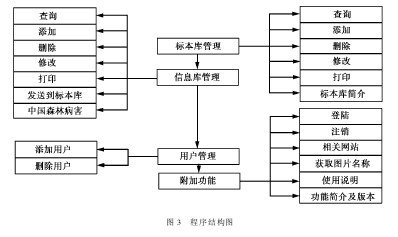
Figure 3 Program structure icons This library management, information library management, user management, additional functions and other four parts. Specimen bank management: The function of the specimen bank management module is to manage the disease specimen information in the specimen library; Information base management: The information base management module mainly manages information on all forest plant diseases in China, including the forest protection institute of the Chinese Academy of Forestry There are existing disease specimens in this module, so the content of the forest plant diseases included in this module is more comprehensive than the contents of the specimen library management; user management: adding, deleting users, and assigning administrators or ordinary user types; additional functions: these functions are all systems Functions, such as: log in, log out, search for related websites in detail, obtain picture names, user manuals, function introductions, and versions.
4.2 All functions of the menu design software should be implemented through various menu options. Therefore, the design of the menu must be comprehensive and reasonable, otherwise the function of the software will be affected. The menu structure design of the system is shown in Table 2.

Table 2 User Information Table Structure 4.3 User Interface Design The system startup interface is shown in Figure 4. After 5 seconds, the startup interface automatically jumps to the main interface, as shown in Figure 6. When the user clicks on the login to enter the registered user login screen (Figure 5), enter the user name and password to log in, you can perform various operations on the database.
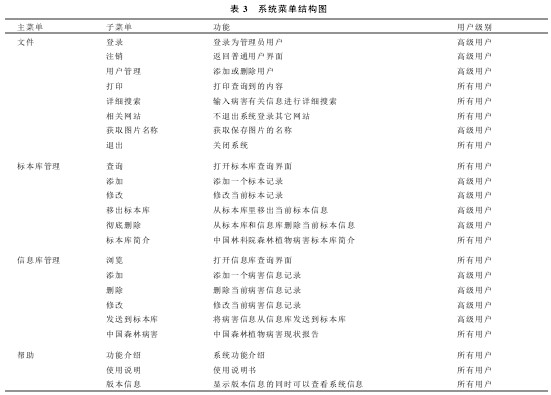
Table 3 System Menu Structure

Figure 4 system startup interface
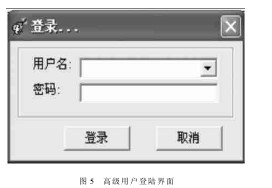
Figure 5 Advanced user login interface
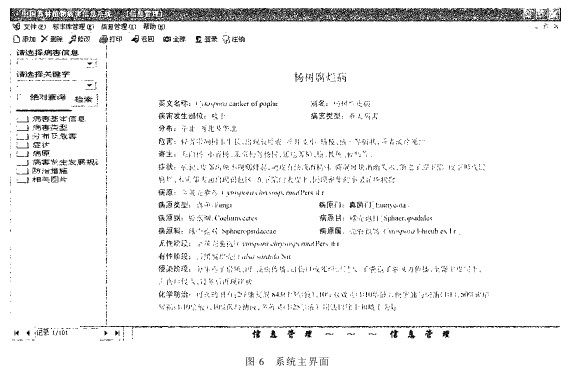
Figure 6 The main interface of the system 5 Conclusion Through the VB 610's powerful user interface design function and database connectivity, as well as the data provided by the Acess2000 database management system, the Chinese forest plant disease information management system has not only the management function of the database, but also has The combination of management and service has been realized for ordinary users' service functions; not only can the management of the forestry plant disease specimen database of the Chinese Academy of Forestry, but also the existing information on the existing forest plant disease information can be managed. The system has a good service function, mainly in the friendly interface, accurate query and fuzzy query. Not only for advanced users, but also ordinary forestry workers or administrative workers can also apply to the system. The system provides forestry workers with rich and detailed forest plant disease information and forest plant disease specimen information. The browsing and query process is simple and has broad prospects within the forestry system.
Small Radial Drilling Machine,Vertical Radial Drilling Machine,Radial Drill Machines,Radial Drill Machine
Tengzhou Borui CNC Machine Tool Co,.Ltd , https://www.br-cnc.com